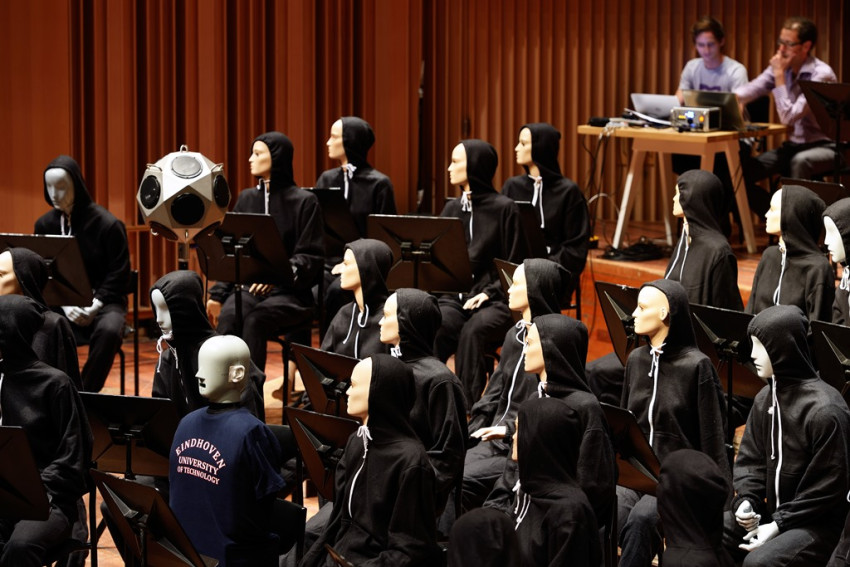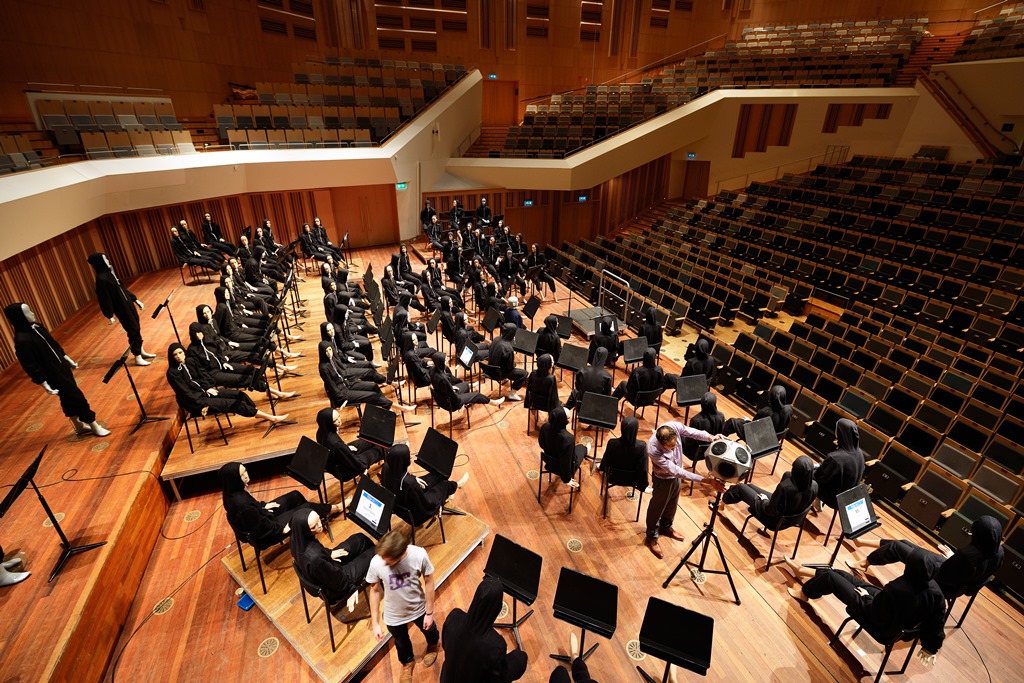
Musicians should use earplugs
Professional musicians in orchestras sometimes take measures to protect their hearing from the decibels of their fellow musicians. Yet this has very little point, explains acoustician Remy Wenmaekers in his doctoral research at the Eindhoven University of Technology, which he completed last Wednesday. The only way to truly protect the hearing, is to wear earplugs permanently. Or to turn the volume down.
Acoustician Remy Wenmaekers developed a model to calculate the noise level in musicians' ears. It is extremely tricky to measure such levels during experiments, as orchestras will never be able to produce the same noise level twice in a row. Experiments are therefore very difficult to compare.
However, the model is based on actual measurements – the scientific approach. Wenmaekers recorded the noise made by each instrument independently in a so-called anechoic chamber (a room without any echo). His measurements provided information on the directional noise of the instruments, the hearing direction of the recipients and noise reflection, but also any blocking of the noise by the musicians themselves. He then fed all this data into his model. The final step was to compare his model results with measurements in a real-life orchestra, and the two sets of data corresponded well.
Wenmaekers visualised his calculations in the video shown below, which represents the noise levels at each individual musician of a symphony orchestra. It takes a while to adjust, but it is then fascinating to see which section of the musicians is playing loudly at any one point in time:
Hearing protection on the shop floor
Wenmaekers' measurements and calculations show the ears of trumpeters and flautists to be most at risk. During loud sections in a piece of music, they are subjected to 95 to 100 dB. Most of that comes from their own instrument, as was shown by Wenmaekers. Violins and violas are also noisy, easily exceeding 90 dB. European regulations require employees to wear hearing protection in the workplace at decibels in excess of 85 dB.
Earplugs or turn the volume down
The research shows that the measures now sometimes taken to protect the hearing – including placing screens between sections of the orchestra and seating the musicians further apart – have little effect. The only real way of making a difference, besides turning the volume down, is to use earplugs.
And there, Wenmaekers has struck a nerve. Earplugs have certainly improved in recent years, and nowadays allow you to hear a much wider range of frequencies. When push comes to shove however, the use of earplugs has a detrimental effect on how you hear music.
Hearing problems
The message brought by the acoustician, a musician himself, is therefore not a popular one. 'A musician with poor hearing is at risk of losing his or her job. If you want to prevent that, earplugs are inevitable. Yet at the same time, you want to perform optimally, and earplugs can get in the way of that. The best solution would be for musicians to learn to play wearing earplugs from an early age. Once the hearing problems become apparent, you're already too late’, according to Wenmaekers in a university press release.
Acoustics on stages
In another part of his research, Wenmaekers worked to improve measuring technology to map out the acoustics on stages. There is great demand for this during the design and improvement of auditoriums.
He proved, for example, that the existing measuring methods, using only empty chairs and stands on the stage, do not provide a realistic picture. During his doctoral research, he seated dressed mannequins on chairs on the stages of five concert halls. Measurements taken during this set-up provided alternative – more realistic – results than with empty chairs.
It clearly showed the importance of working with people on the stage, and Wenmaekers was able to develop a quick measuring method, only requiring the presence of orchestra musicians for ten minutes.

Greek theatres
During his doctoral research, Wenmaekers also worked on a study of the acoustics in ancient Greek theatres. Although widely acclaimed as being legendary, measurements in three well-known theatres showed the acoustic properties to be disappointing.
Wenmaekers has published his findings and his thesis on his own website.
Opening image Measurements using mannequins as musicians in the Muziekgebouw Frits Philips in Eindhoven. Photo Bart van Overbeeke
Newsletter
If you found this article interesting, then subscribe for free to our weekly newsletter.







